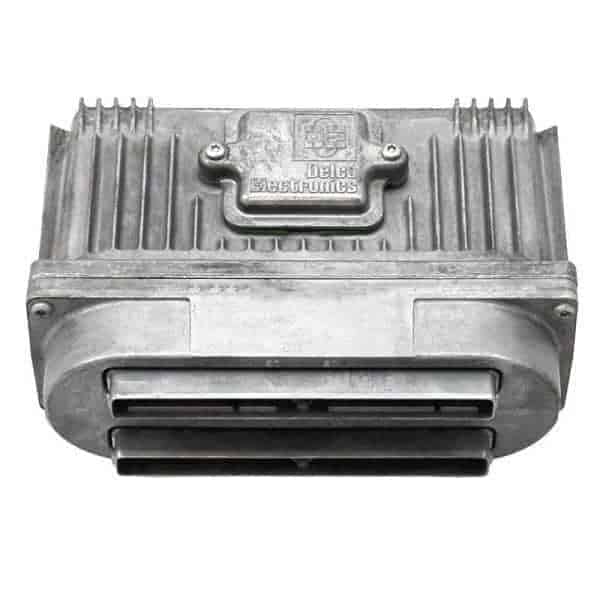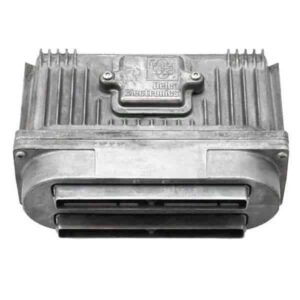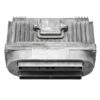Restore Peak Performance to Your 1996 GM Vehicle
Is your 1996 Buick Park Avenue or other GM vehicle suffering from frustrating issues like intermittent stalling, poor fuel mileage, or an illuminated Check Engine Light? These are classic signs of a failing Powertrain Control Module (PCM), the computer that acts as the brain of your engine and transmission. A faulty PCM can make your vehicle unreliable and stressful to drive. This replacement module, part number 16211539, is the definitive solution to restore your vehicle’s original performance and dependability.
Unlike generic modules that require expensive dealer programming, we handle the critical software setup for you. Before we ship your part, we will flash it with the latest official GM software updates, precisely matched to your vehicle’s Vehicle Identification Number (VIN). This ensures seamless communication between all your vehicle’s systems, just as the factory intended. This is the most effective way to solve complex electronic issues and get your car running smoothly again without a trip to the dealership. By installing this correctly programmed 1996 Park Avenue PCM, you’re not just replacing a part; you’re providing a stable, reliable foundation for your engine’s management system.
From the Diagnostic Bay: Chasing an Intermittent Stall
I remember a 1996 Buick LeSabre with the 3.8L V6 that came into my shop with a problem that drove the owner crazy: it would randomly stall at red lights, but only when warm. There were no consistent trouble codes, just a history of random misfires. We checked fuel pressure, spark, and sensors—all tested fine. From experience, I know these older PCMs can develop internal heat-related failures. We connected a scope to the injector control circuits and, sure enough, after 20 minutes of idling, the signal would drop out on multiple cylinders right before it stalled. We installed a VIN-programmed PCM, and the problem was solved instantly. The original module’s internal drivers were failing under thermal stress, a common issue a simple code reader won’t catch.
Common Signs of a Failing PCM
- ✔ Unexplained Check Engine Light illumination.
- ✔ Stored diagnostic trouble codes (DTCs) such as P0601, P0602, or P0606 indicating internal module failure.
- ✔ Engine stalling, stumbling, or hesitating for no apparent reason.
- ✔ Noticeable decrease in fuel economy.
- ✔ Harsh or erratic automatic transmission shifting.
- ✔ The vehicle fails to start, even with a good battery and starter (no-start condition).
- ✔ Communication errors with diagnostic scan tools.
A Straightforward Guide to Installation
- ✔ Safety First: Always disconnect the negative terminal from your vehicle’s battery before starting any electrical work.
- ✔ Locate the PCM: On most of these 1996 GM vehicles, the PCM is located in the engine bay, often inside the air filter box housing for protection.
- ✔ Disconnect Connectors: Carefully release the locking tabs on the electrical wiring harnesses and gently pull them straight out from the module. Avoid damaging the pins.
- ✔ Remove the Old Module: Unbolt the PCM from its mounting bracket. Note the orientation of the old unit.
- ✔ Install the New PCM: Mount your new, pre-programmed 1996 Park Avenue PCM in the same position. Secure the mounting bolts.
- ✔ Reconnect and Secure: Firmly plug the wiring harnesses back into the correct sockets on the new module until they click into place.
- ✔ Final Step: Reconnect the negative battery terminal. The vehicle is now ready to start. In some cases, a security relearn procedure may be necessary, which can typically be done without special tools.
Confirmed Vehicle Compatibility
This module is a direct-fit replacement for a wide range of 1996 General Motors vehicles. It is compatible with part numbers 88963800, 16211539, and 16231853. Please provide your VIN upon purchase to ensure we load the correct software for your specific model and engine configuration.
- 1996 Achieva (3.1L)
- 1996 Beretta (3.1L)
- 1996 Bonneville (3.8L)
- 1996 Century (3.1L)
- 1996 Ciera (3.1L)
- 1996 Corsica (3.1L)
- 1996 Cutlass (3.1L, 3.4L)
- 1996 Eighty Eight (3.8L)
- 1996 Grand Am (3.1L)
- 1996 Grand Prix
- 1996 LeSabre (3.8L)
- 1996 Lumina Car (3.1L, 3.4L)
- 1996 Lumina Van (3.4L)
- 1996 Monte Carlo
- 1996 Ninety Eight (3.8L)
- 1996 Park Avenue (3.8L)
- 1996 Regal
- 1996 Riviera (3.8L)
- 1996 Silhouette (3.4L)
- 1996 Skylark (3.1L)
- 1996 Trans Sport (3.4L)
Frequently Asked Questions
Why do you need my VIN?
Your Vehicle Identification Number (VIN) allows us to load the exact, vehicle-specific software from GM. This ensures your engine, transmission, and options like cruise control and anti-theft systems function correctly right out of the box.
Is this part difficult to install for a DIYer?
Not at all. Since we pre-program the module, the physical installation is typically straightforward. It involves disconnecting the battery, unplugging the old module, swapping it with the new one, and reconnecting everything. Most DIYers can complete the job in under an hour with basic hand tools.
What is the difference between a PCM and an ECM?
ECM stands for Engine Control Module, while PCM means Powertrain Control Module. For these 1996 GM vehicles, the terms are often used interchangeably. A PCM is technically an ECM that also controls the automatic transmission functions, which is the case for this part.
Will I need to perform any other programming after installation?
No. Our service includes flashing the module with the correct software for your vehicle. In some cases, a simple key-cycle security relearn procedure might be needed, but this does not require any special scan tools.
How do I provide my VIN?
After you complete your purchase, you will need to send us a message with your 17-digit VIN. We cannot program and ship your module without it.



